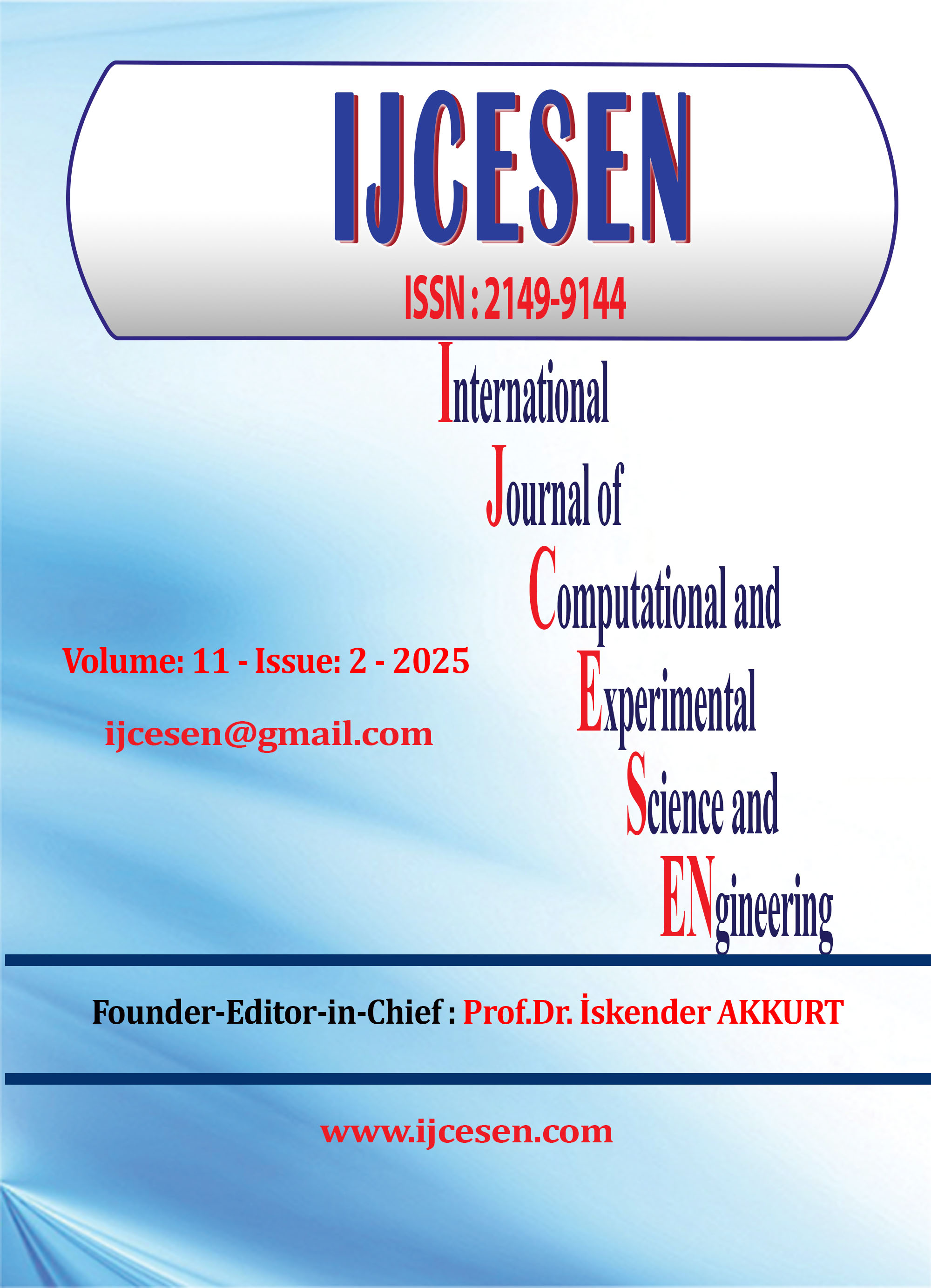Evaluating the Effectiveness of Phase-Change Material (PCM) Integrated Facades in Enhancing Thermal Comfort through Occupant Perception
DOI:
https://doi.org/10.22399/ijcesen.1717Keywords:
Phase Change Material, Thermal Comfort, Occupant Perception, Climate Change, Energy EfficiencyAbstract
This study investigates the impact of phase change material (PCM) integrated facades on indoor thermal comfort and occupant perception using a quantitative approach. A structured questionnaire was employed to assess thermal responses across different age groups. Results indicate that PCM facades significantly reduce indoor temperature fluctuations and improve thermal stability, with paraffin-based PCMs demonstrating superior heat absorption and release capabilities. However, occupant perception of comfort exhibited variability, suggesting additional influencing factors such as ventilation and metabolic differences. The study highlights the need for climate-specific PCM applications and improved material integration strategies. Future research should explore long-term PCM performance across diverse climates to optimize sustainable building design and enhance occupant thermal satisfaction.
References
Kharbouch, Y., (2022). Effectiveness of phase change material in improving the summer thermal performance of an office building under future climate conditions: An investigation study for the Moroccan Mediterranean climate zone. Journal of Energy Storage, 54(1), p. 105253. DOI: https://doi.org/10.1016/j.est.2022.105253
Tachikawa, S., Nagano, H., Ohnishi, A. & Nagasaka, Y., (2022). Advanced Passive Thermal Control Materials and Devices for Spacecraft: A Review. International Journal of Thermophysics, 43(1), p. 91. DOI: https://doi.org/10.1007/s10765-022-03010-3
Malkawi, D. S., Rabady, R. I., Malkawi, M. S. & Rabadi, S. J. A., (2023). Application of Paraffin-Based Phase Change Materials for the Amelioration of Thermal Energy Storage in Hydronic Systems. Energies, 16(1), p. 126. DOI: https://doi.org/10.3390/en16010126
Erkizia, E. et al., (2024). Study of paraffinic and biobased microencapsulated PCMs with reduced graphene oxide as thermal energy storage elements in cement-based materials for building applications. Journal of Energy Storage, 84(1), p. 110675. DOI: https://doi.org/10.1016/j.est.2024.110675
Cui, G., (2024). Geometric optimization of the space around the buildings based on the improvement of thermal comfort efficiency of the building. International Journal of Low-Carbon Technologies, 19(1), pp. 1288-1300. DOI: https://doi.org/10.1093/ijlct/ctae077
Tian, Y. et al., (2022). Factors influencing resident and tourist outdoor thermal comfort: a comparative study in China's cold region. Science of the Total Environment, Volume 808, p. 152079. DOI: https://doi.org/10.1016/j.scitotenv.2021.152079
Luthe, B. & Ahmed, T., (2019). Revisiting the Comfort Parameters of ISO 7730: Measurement and Simulation. In Building Simulation, September, Volume 16, pp. 4267-4273. DOI: https://doi.org/10.26868/25222708.2019.210983
dos Reis, A. & Tavares, A., (2022). Passive Discomfort Index as an alternative to Predicted Mean Vote and Predicted Percentage of Dissatisfied to assess occupant’s thermal discomfort in dwellings. Energy Reports, Volume 8, pp. 956-965. DOI: https://doi.org/10.1016/j.egyr.2022.07.128
Xu, T. et al., (2023). A quantitative evaluation model of outdoor dynamic thermal comfort and adaptation: A year-long longitudinal field study. Building and Environment, 237(1), p. 110308. DOI: https://doi.org/10.1016/j.buildenv.2023.110308
Rahman, M., Tabash, M. I., Salamzadeh, A. & Abduli, S., (2022). Sampling Techniques (Probability) for Quantitative Social Science Researchers: A conceptual guidelines wit example. SEEU Review, 17(1), p. 42. DOI: https://doi.org/10.2478/seeur-2022-0023
Dong, Y., (2023). Descriptive Statistics and Its Applications. Highlights in Science Engineering and Technology, 47(1), pp. 16-23. DOI: https://doi.org/10.54097/hset.v47i.8159
Jamei, E., Chau, H.-W. & Ramasubramanian, B., (2023). favourable occupant response in varied manners of integration of the PCM integration in facades and the occupant thermal comfort perception value. Architecture, 3(2), pp. 213-233. DOI: https://doi.org/10.3390/architecture3020013
Kim, S., Ryu, J. & Hong, W.-H., (2024). Classification of thermal environment control indicators according to the thermal sensitivity of office occupants. Heliyon, 10(4), p. e26038. DOI: https://doi.org/10.1016/j.heliyon.2024.e26038
Ghamari, M. et al., (2024). Advancing sustainable building through passive cooling with phase change materials, a comprehensive literature review. Energy and Buildings, 312(1), p. 114164. DOI: https://doi.org/10.1016/j.enbuild.2024.114164
Zheng, S. & Cao, Y., (2022). Correlation analysis for different types of variables and relationship between different correlation coefficients. Biometrics & Biostatistics International Journal, 11(4), pp. 127-129 DOI: https://doi.org/10.15406/bbij.2022.11.00365
Hassani, A., Jancewicz, B., Wrotek, M. & Chwalczyk, F., (2024). Understanding thermal comfort expectations in older adults: The role of long-term thermal history. Building and Environment, 263(1), p. 111900. DOI: https://doi.org/10.1016/j.buildenv.2024.111900
Abu Halka, M., & Nasereddin, S. (2025). The Role of Social Media in Maternal Health: Balancing Awareness, Misinformation, and Commercial Interests. International Journal of Computational and Experimental Science and Engineering, 11(1). https://doi.org/10.22399/ijcesen.1365 DOI: https://doi.org/10.22399/ijcesen.1365
Radhi, M., & Tahseen, I. (2024). An Enhancement for Wireless Body Area Network Using Adaptive Algorithms. International Journal of Computational and Experimental Science and Engineering, 10(3). https://doi.org/10.22399/ijcesen.409 DOI: https://doi.org/10.22399/ijcesen.409
Akram M. Musa, Abu-Shaikha, M., & Al-Abed, R. Y. (2025). Enhancing Predictive Accuracy of Renewable Energy Systems and Sustainable Architectural Design Using PSO Algorithm. International Journal of Computational and Experimental Science and Engineering, 11(1). https://doi.org/10.22399/ijcesen.842 DOI: https://doi.org/10.22399/ijcesen.842
Yaareb Elias Ahmed, Jagadeesh Pasupuleti, Fadhil Khadoum Alhousni, Firas Basim Ismail, & Ismail Hossain. (2025). Designing integrated intelligent control systems for photovoltaic cooling and dust panels based on IoT: Kirkuk study, Iraq. International Journal of Computational and Experimental Science and Engineering, 11(1). https://doi.org/10.22399/ijcesen.1092 DOI: https://doi.org/10.22399/ijcesen.1092
Kabashi, G., Kola, L., Kabashi, S., & Ajredini, F. (2024). Assessment of climate change mitigation potential of the Kosovo energy and transport sector . International Journal of Computational and Experimental Science and Engineering, 10(3). https://doi.org/10.22399/ijcesen.325 DOI: https://doi.org/10.22399/ijcesen.325
K. Neelashetty, Sonali Goel, Farooqhusain Inamdar, Yeswanth Dintakurthy, L. N. Sastry Varanasi, & V. B. Murali Krishna. (2025). Optimal Energy Management in Microgrids: A Demand Response Approach with Monte Carlo Scenario Synthesis and K-Means Clustering. International Journal of Computational and Experimental Science and Engineering, 11(1). https://doi.org/10.22399/ijcesen.1023 DOI: https://doi.org/10.22399/ijcesen.1023
Downloads
Published
How to Cite
Issue
Section
License
Copyright (c) 2025 International Journal of Computational and Experimental Science and Engineering

This work is licensed under a Creative Commons Attribution 4.0 International License.





